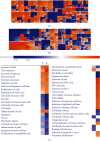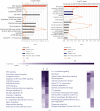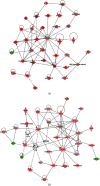Proteomic Analysis of Exudates from Chronic Ulcer of Diabetic Foot Treated with Scorpion Antimicrobial Peptide
- PMID: 36225537
- PMCID: PMC9550419
- DOI: 10.1155/2022/5852786
Proteomic Analysis of Exudates from Chronic Ulcer of Diabetic Foot Treated with Scorpion Antimicrobial Peptide
Abstract
Scorpion peptides have good therapeutic effect on chronic ulcer of diabetic foot, but the related pharmacological mechanism has remained unclear. The different proteins and bacteria present in ulcer exudates from chronic diabetic foot patients, treated with scorpion antimicrobial peptide at different stages, were analyzed using isobaric tags for quantification-labeled proteomics and bacteriological methods. According to the mass spectrometry data, a total of 1865 proteins were identified qualitatively, and the number of the different proteins was 130 (mid/early), 401 (late/early), and 310 (mid, late/early). In addition, functional annotation, cluster analysis of effects and the analysis of signal pathway, transcription regulation, and protein-protein interaction network were carried out. The results showed that the biochemical changes of wound microenvironment during the treatment involved activated biological functions such as protein synthesis, cell proliferation, differentiation, migration, movement, and survival. Inhibited biological functions such as cell death, inflammatory response, immune diseases, and bacterial growth were also involved. Bacteriological analysis showed that Burkholderia cepacia was the main bacteria in the early and middle stage of ulcer exudate and Staphylococcus epidermidis in the late stage. This study provides basic data for further elucidation of the molecular mechanism of diabetic foot.
Copyright © 2022 Zhixiang Tan et al.
Conflict of interest statement
The authors declare no conflict of interest.
Figures








References
MeSH terms
Substances
LinkOut - more resources
Full Text Sources
Medical

